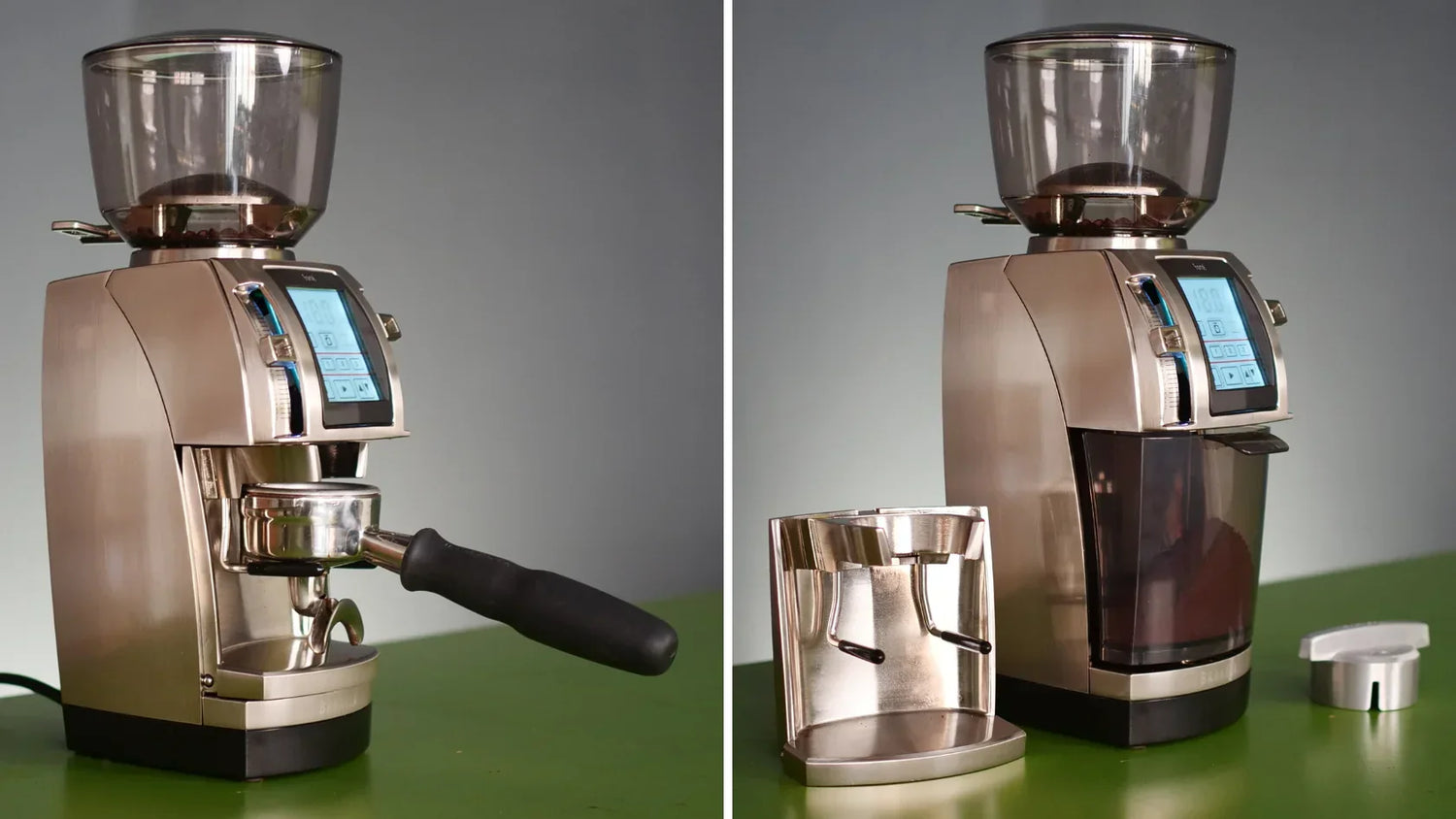The Baratza Forté AP marks the final stretch of our extensive espresso grinder test . We've tested over 30 espresso grinders to date. We tasted espresso, measured particle distribution in a specialized laboratory, and tested the grinder for all possible uses.
The Baratza Forté AP delivers mixed results. The focus of the grinder is on good espresso, thanks to its 54 mm ceramic burrs. The grind is finely ground, resulting in clear and good extractions. On the other hand, the grinder is loud, very inaccurate when using the portafilter holder, and lacks dead space and speed. In our review video, we discuss the strengths and weaknesses of the Baratza Forté AP.
The Baratza Forte AP costs around 800 euros in the EU (e.g. at Coffee Circle ) and is available in Switzerland for just over 1000 francs, e.g. at Kafischmitte .
A good espresso and few fines
We drink some good espressos while putting the Baratza Forte with the All Purpose burrs through its paces. The low fineness of the grinder gives us plenty of clarity in the cup, sometimes at the expense of sweetness. But the texture and body complement each other well.
The repeatability of the results is good overall, although the fine peak fluctuates from test 4 to 7. However, the main peak remains constant at 261 microns, in a medium range compared to other mills.
The Baratza Forté AP can be adjusted relatively precisely using the micro and macro settings, and it is also easy to return to the same grind size.

Speed and volume
In terms of noise level, the Baratza is close to the highest decibel level of the entire test series. 89.4 decibels is quite a statement. However, the grinding doesn't sound strained, like with some cheaper espresso grinders. Anyone choosing the Baratza Forté AP as their grinder will definitely be choosing against the quiet noise.
The mill's speed is average. It grinds 22.7 grams in 10 seconds. It's astonishing that, despite its ceramic grinding discs, the mill still heats the ground coffee to an average of 38.2 degrees Celsius. In our experience, sensory perceptible changes to the ground coffee occur around this range.

Usability and bean container
One of the highlights of the Baratza Forte AP is its control and usability. This starts with small details, such as the easily removable bean hopper. With a flip-down lever, the bean hopper can be closed and then removed. Only 9 grams of beans remain in the bean chute.
The mill's controls are also simple. It's easy to switch between weighing and time-controlled modes. However, the time-controlled mode is significantly less precise. Fluctuations in the grinding powder of up to one gram make the time-controlled mill unreliable. However, the scale control is much more precise. The deviation here is only 0.1 grams.
It's a shame that the portafilter can't be filled directly in weighing mode. The only option is to transfer the grounds from the dosing cup into the portafilter. However, the included grounds container is far too bulky and large to fill the portafilter. Therefore, we were pleased that, with a little practice, our own dosing cup also fit under the grounds ejector.
Single dosing and dead space
It's a bit of a shame that the grinder isn't a pioneer in terms of dead space and single-dosing dead space. 3.9 grams remain in the absolute dead space , and the temporary dead space is barely less. Even when the grinder is fully ground, at least 0.5 grams of coffee remains. Therefore, the grinder is only partially suitable for single-dosing use.
In principle, the space around the burrs is relatively small. Unfortunately, the burrs' carriers are unable to push the ground coffee past the flapper.
This means the grinder is missing out on a real opportunity, because with the good grinding results for espresso and filter coffee, the Baratza Forté AP is definitely an interesting choice from a sensory perspective.

![]()


























